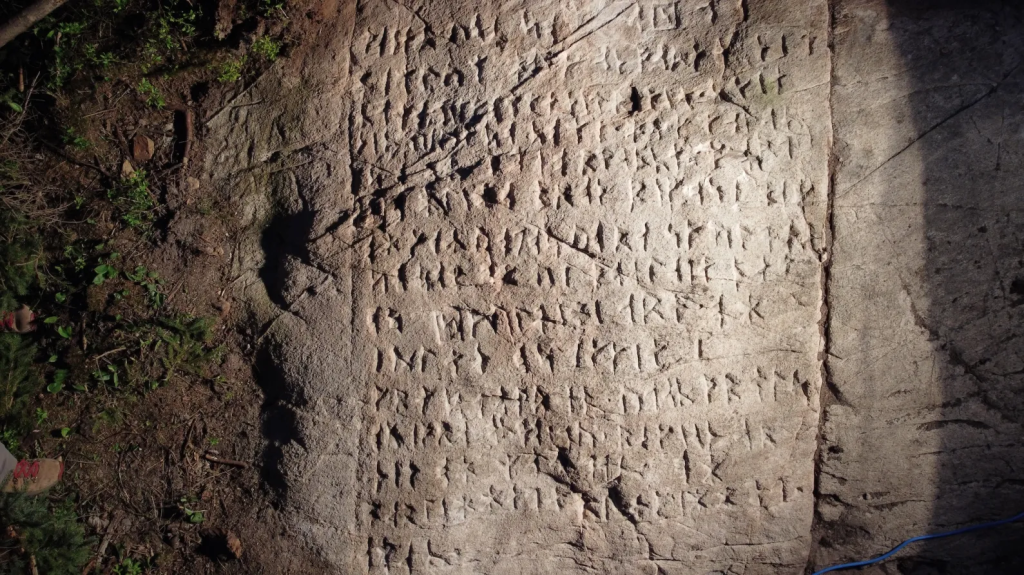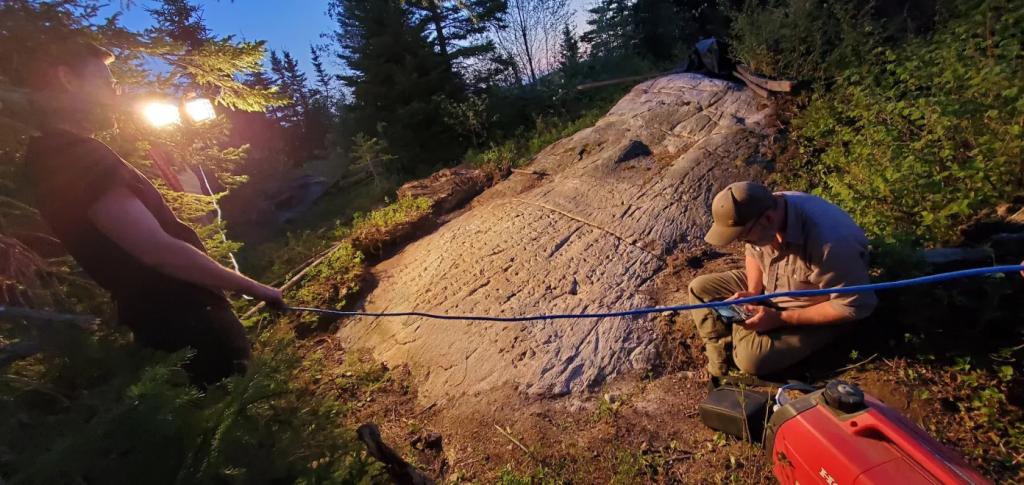In the remote wilderness of Ontario, a small stone etched with strange symbols has sparked renewed debate among historians and archaeologists. Discovered by chance, the artifact may contain runes, ancient Viking symbols that hint at a possible Norse presence in Canada. It is said that the writing translates to the Lords prayer. To some, the markings suggest that Norse explorers traveled deeper into North America than previously confirmed. Others believe the stone is nothing more than a modern forgery. Regardless of its origin, the artifact has captured public imagination and challenged researchers to uncover the truth.
As images of the stone spread online, experts and enthusiasts alike began weighing in. Some believe it could reshape history, while others urge caution and demand stronger evidence. Could these runes offer new insight into Viking exploration, or are they part of an elaborate hoax designed to mislead?
A Stone Rekindles Viking Curiosity
The discovery of the stone happend completely by chance when a tree fell near the small town of Wawa, near Lake Superior. The inscription had been hidden by roots, becoming exposed when the tree toppled over.
The carvings resemble Norse runes, which Vikings once used to write on weapons, stones, and tools. These symbols appear throughout Scandinavia and parts of the North Atlantic. If authentic, the runes on this stone could point to a much wider Viking presence in North America.

Today, L’Anse aux Meadows in Newfoundland stands as the only confirmed Viking settlement in North America. Archaeologists there unearthed tools, structures, and food remnants that clearly show Norse activity around 1000 CE. In contrast, the Ontario stone lacks supporting evidence. No other artifacts or runes have turned up in the area, making it difficult to verify the stone’s origin.
Read More: Archaeologists Hail Discovery of 9,000-Year-Old City Near Jerusalem as a Major Find
Experts Challenge the Stone’s Authenticity
Despite growing interest, many researchers remain skeptical. Linguists and archaeologists who reviewed the markings flagged several issues that weaken claims of authenticity.
First, the runes on the stone don’t follow established Norse writing patterns. Some symbols appear inaccurate, out of place, or inconsistent with known inscriptions. Experts familiar with ancient alphabets question whether Vikings could have created these markings.
Second, the discovery didn’t happen under scientific conditions. The stone was found by chance, outside of a controlled archaeological site. Without nearby runes, artifacts, or other cultural traces, researchers can’t confidently link the object to a Norse expedition.
Third, the markings themselves raise doubts. The cuts look clean and fresh, with little wear from age or exposure. Genuine Viking-era runes typically show signs of weathering. The crisp carvings on the stone suggest someone may have used modern tools to etch them.
Hoaxes Leave a Long Trail of Rune Controversy
This isn’t the first time stones have stirred controversy in North America. Several similar discoveries have turned out to be hoaxes or misunderstandings.
One of the most famous examples is the Kensington Rune Stone, unearthed in Minnesota in 1898. At first, many believed it proved Viking explorers reached the American Midwest. But later analysis exposed major flaws. The language on the stone included grammar and vocabulary unknown in the Viking Age.
Still, the Kensington Rune Stone became a cultural icon. Locals embraced the artifact and built museums and festivals around it. The story, though discredited by scholars, still draws curious visitors. The Ontario stone could follow a similar path, more legend than evidence, but no less compelling.
These hoaxes highlight a recurring pattern. People want to believe in ancient secrets and forgotten journeys. The challenge lies in separating wishful thinking from historical fact.
Read More: Scientists Make Eerie Discovery While Investigating Mariana Trench
Why the Runes Still Matter
Even with skepticism running high, some researchers believe the stone deserves a closer look. Scientific tools like 3D scanning and material analysis can help reveal when and how someone carved the runes. If they prove recent, the mystery ends quickly. But if the tools show aging consistent with ancient artifacts, researchers may need to revisit their assumptions.

Even if modern, the runes offer cultural value. They reveal how people engage with history and create stories that blend fact and folklore. These kinds of mysteries often spark curiosity and debate, which help keep history alive and relevant.
The stone also teaches valuable lessons about evidence and credibility. A single object, without artifacts or runes to support it, can’t rewrite history. But it can start conversations that push us to learn more and question what we think we know.
Real or Fake, the Mystery Lives On
The stone found in Ontario remains an unsolved puzzle. Without other artifacts or findings, it’s unlikely to confirm a new chapter of Viking exploration. The runes may simply be a modern fabrication. Still, they’ve already sparked fascination and debate across the world.
This artifact reminds us that the most compelling stories don’t always come with clear answers. Whether real or not, the runes challenge us to think critically and remain curious. They ask us to explore both the past and the stories we build around it.
Read More: ‘Alien Technology’? Scientists Investigate Unusual Spherical UFO

